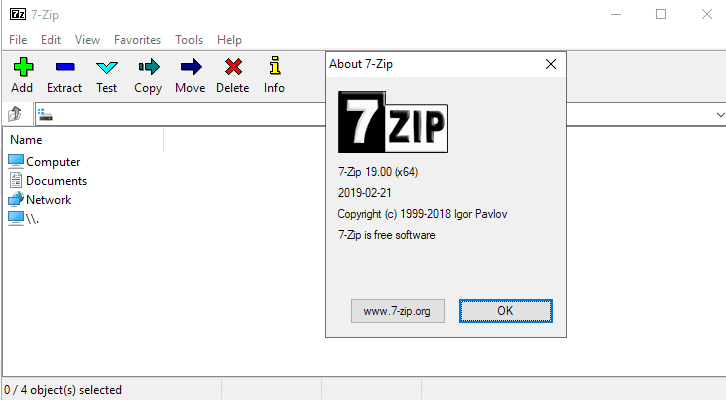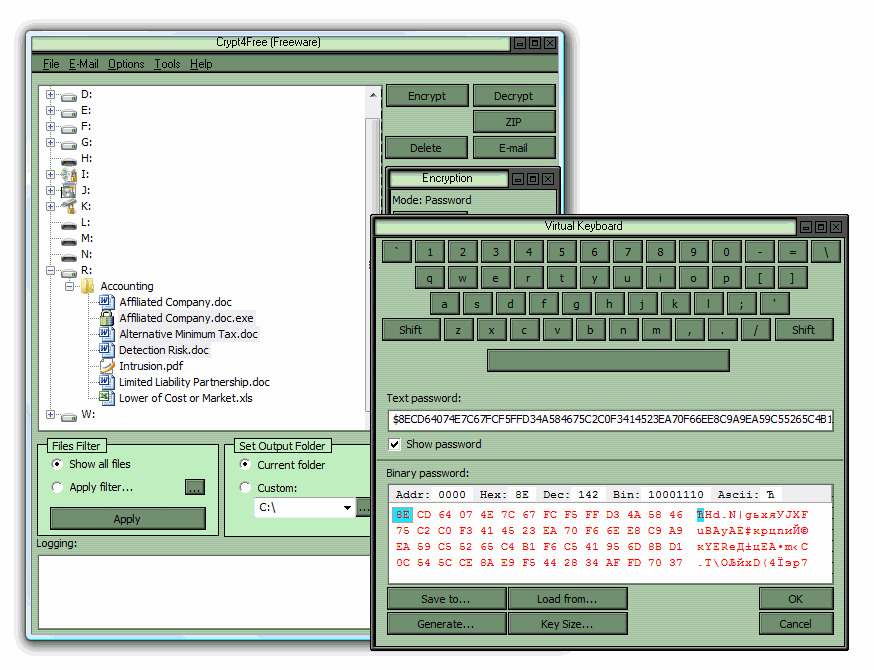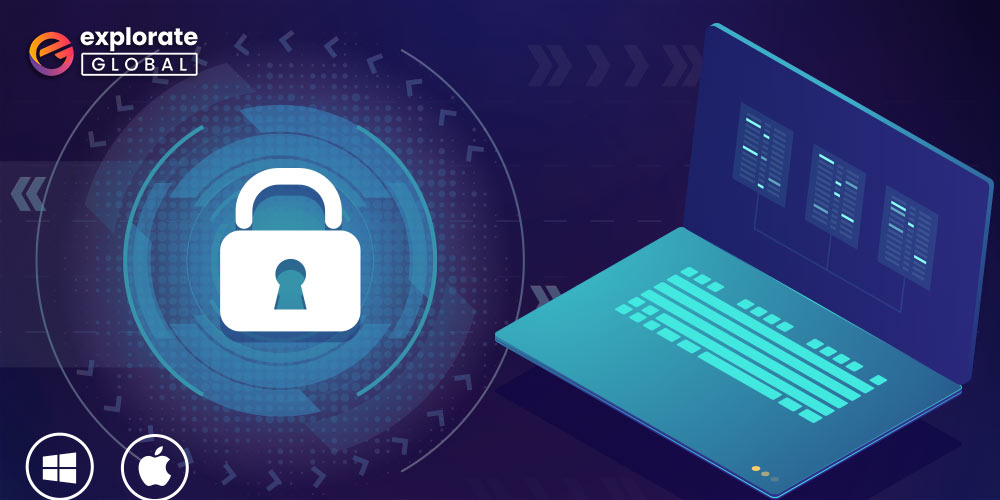Delving into cryptography software free, this introduction immerses readers in a unique and compelling narrative. Cryptography software plays a crucial role in securing sensitive data through advanced encryption techniques, ensuring confidentiality and integrity.
As we explore the realm of free cryptography software, we will uncover the essential features, installation processes, encryption algorithms, user interface considerations, security audits, compatibility aspects, and community support available in this dynamic field.
Overview of Cryptography Software

Cryptography software plays a vital role in securing sensitive information by converting it into a code that can only be accessed by authorized parties. This software utilizes complex algorithms to encrypt data, making it unreadable to anyone without the proper decryption key.
Popular Free Cryptography Software
- VeraCrypt: VeraCrypt is an open-source encryption tool that allows users to create encrypted virtual disks and partitions to protect their data.
- GnuPG: GnuPG, also known as GPG, is a free implementation of the OpenPGP standard, enabling users to encrypt and sign their data and communications.
- AxCrypt: AxCrypt is a user-friendly encryption software that provides strong file encryption to secure files stored on local or cloud storage.
Importance of Encryption in Data Security
Encrypting data is crucial in maintaining the confidentiality and integrity of information, especially in an era where cyber threats are prevalent. Encryption prevents unauthorized access to sensitive data, ensuring that only authorized individuals can decrypt and access the information. By using cryptography software, organizations and individuals can safeguard their data from cyber attacks and maintain the privacy of their communications.
Features of Free Cryptography Software
Free cryptography software offers a range of features that are essential for secure communication and data protection. These features are designed to provide users with the tools they need to encrypt and decrypt messages, files, and other sensitive information.
Common Features Found in Free Cryptography Software
- Encryption and Decryption: Free cryptography software allows users to encrypt their data to make it unreadable to unauthorized parties and decrypt it back to its original form.
- Key Management: These tools provide options for generating, storing, and managing encryption keys securely.
- Secure Communication: Free cryptography software enables secure communication through methods like SSL/TLS protocols and secure email encryption.
- Digital Signatures: Users can create and verify digital signatures to ensure the authenticity and integrity of messages.
- Hashing Algorithms: These software include various hashing algorithms to securely store passwords and verify data integrity.
Comparison of Different Free Cryptography Software Options
| Software | Encryption Algorithms | Key Length |
|---|---|---|
| OpenSSL | AES, RSA, DES | Up to 4096 bits |
| GnuPG | CAST5, AES, Twofish | Up to 4096 bits |
| VeraCrypt | AES, Serpent, Twofish | Up to 256 bits |
Contribution to Secure Communication
- Privacy Protection: Free cryptography software ensures that sensitive information remains private and secure from eavesdroppers.
- Data Integrity: By using encryption and digital signatures, these tools help maintain the integrity of data during transmission and storage.
- Authentication: Digital signatures and secure communication protocols allow users to authenticate the identity of the sender and verify the integrity of received messages.
Installation and Setup
When it comes to installing and setting up free cryptography software, it is essential to follow the correct steps to ensure optimal security for your data. Additionally, setting up encryption keys securely is crucial to maintaining the confidentiality of your information.
Installation Process
Here are the general steps to install free cryptography software:
- Download the cryptography software from a trusted source.
- Run the installation file and follow the on-screen instructions.
- Choose the installation directory and any additional settings as required.
- Complete the installation process and launch the software.
Setting up Encryption Keys Securely
It is important to set up encryption keys securely to ensure the protection of your data. Here are some tips:
- Generate strong encryption keys using a reliable key generation algorithm.
- Store your encryption keys in a secure location, preferably offline or in a hardware security module.
- Regularly update and rotate your encryption keys to enhance security.
- Avoid sharing your encryption keys with unauthorized individuals or storing them in unsecured locations.
Additional Configurations for Optimal Security
In addition to installing the software and setting up encryption keys securely, there are some additional configurations you can make for optimal security:
- Enable multi-factor authentication to add an extra layer of security to your encrypted data.
- Configure firewall settings to restrict access to the cryptography software and prevent unauthorized external connections.
- Regularly update the cryptography software to ensure that you have the latest security patches and features.
Encryption Algorithms

Encryption algorithms play a crucial role in cryptography software by providing the necessary mathematical functions to secure data through encryption and decryption processes. These algorithms determine how data is transformed into an unreadable format (ciphertext) and then back into its original form (plaintext) using cryptographic keys.
Comparison of Encryption Algorithms
- RSA (Rivest-Shamir-Adleman): A widely used asymmetric encryption algorithm known for its security and versatility in securing data transmission.
- AES (Advanced Encryption Standard): A symmetric encryption algorithm that is highly efficient and secure, commonly used for data encryption.
- DES (Data Encryption Standard): An older symmetric encryption algorithm that has been replaced by AES due to security vulnerabilities.
- Triple DES: A symmetric encryption algorithm that applies DES three times for increased security, commonly used in legacy systems.
- Blowfish: A symmetric encryption algorithm known for its simplicity and speed, suitable for applications requiring fast encryption and decryption.
Importance of Choosing Strong Encryption Algorithms
Choosing strong encryption algorithms is vital for data protection as it ensures that sensitive information remains secure and confidential. Weak encryption algorithms can be vulnerable to attacks, leading to data breaches and unauthorized access to confidential data. Strong encryption algorithms provide a robust defense mechanism against malicious threats and safeguard the integrity of data during transmission and storage.
User Interface and User Experience: Cryptography Software Free
When it comes to free cryptography software, the user interface plays a crucial role in determining the overall user experience. A well-designed interface can make encryption tools more accessible and user-friendly, ultimately impacting the adoption of cryptography tools positively.
User Interface Design
The user interface design of free cryptography software should prioritize simplicity, intuitiveness, and clarity. Users should be able to navigate the software easily, understand the functions available, and perform encryption tasks without unnecessary complications. Visual elements such as icons, buttons, and menu layouts should be designed thoughtfully to enhance user experience.
User Experience Impact
A positive user experience is essential for the widespread adoption of cryptography tools. If users find the software difficult to use or confusing, they may be deterred from utilizing encryption to protect their data. By focusing on usability and user-friendly design, cryptography software can attract more users and encourage them to incorporate encryption into their digital practices.
Tips for Improving Usability, Cryptography software free
– Provide clear instructions and guidance within the software to help users understand how to encrypt and decrypt their data effectively.
– Streamline the encryption process by minimizing unnecessary steps and optimizing the user workflow.
– Offer customization options for users to personalize their encryption preferences and settings.
– Implement responsive design principles to ensure the software is accessible on different devices and screen sizes.
– Conduct usability testing with real users to gather feedback and make improvements based on user interactions and preferences.
Security Audits and Reviews
Security audits and reviews play a crucial role in ensuring the reliability and effectiveness of free cryptography software. These processes are essential to identify and address potential vulnerabilities, strengthen security measures, and maintain user trust.
Importance of Security Audits
Regular security audits are necessary to assess the overall security posture of cryptography software. By conducting thorough audits, developers can detect weaknesses in the encryption algorithms, implementation flaws, or other security gaps that could be exploited by malicious actors.
Security audits help in identifying and mitigating security risks before they can be exploited.
Importance of Regular Reviews and Updates
Regularly reviewing and updating cryptography tools is essential to stay ahead of evolving security threats. New vulnerabilities are constantly being discovered, and software updates are necessary to address these vulnerabilities and enhance the overall security of the system.
Regular reviews and updates ensure that cryptographic software remains robust and resilient against emerging threats.
Best Practices for Ensuring Security
- Implementing strong encryption algorithms and key management practices.
- Regularly updating cryptographic libraries and dependencies.
- Conducting regular security audits by independent third-party experts.
- Following industry best practices and standards for cryptography implementation.
- Providing secure channels for key exchange and transmission.
Compatibility and Integration
When it comes to compatibility and integration, free cryptography software plays a crucial role in ensuring seamless operation across different systems and tools.
Operating System Compatibility
- Free cryptography software is designed to be compatible with a wide range of operating systems, including Windows, macOS, Linux, and even mobile platforms like iOS and Android.
- This ensures that users can leverage the benefits of encryption across various devices and environments without any compatibility issues.
- Compatibility with multiple operating systems enhances the flexibility and usability of cryptography software, making it accessible to a larger user base.
Integration with Security Tools
- Cryptography software seamlessly integrates with other security tools such as firewalls, antivirus programs, and intrusion detection systems to provide comprehensive protection against cyber threats.
- Integration with security tools enhances the overall security posture of an organization by adding an extra layer of encryption to sensitive data.
- By working in tandem with other security solutions, cryptography software ensures that data remains secure and protected from unauthorized access.
Examples of Seamless Integration
- Free cryptography software can be easily integrated with popular cloud storage services like Dropbox, Google Drive, and OneDrive to encrypt files before uploading them to the cloud.
- Some cryptography software solutions offer plugins or APIs that allow seamless integration with email clients like Outlook or Thunderbird for encrypting email communications.
- Integration with messaging apps like WhatsApp, Signal, or Telegram enables users to exchange encrypted messages securely, ensuring privacy and confidentiality.
Support and Community

When using free cryptography software, users can benefit from various support options and community resources to enhance their experience and address any issues that may arise.
Available Support Options
- Online documentation and user guides are typically provided to help users understand the software’s features and functionalities.
- Email support allows users to reach out to developers or support teams for assistance with technical issues or inquiries.
- Community forums and discussion boards enable users to interact with other individuals using the software, sharing tips, troubleshooting solutions, and best practices.
Benefits of Being Part of a Cryptography Software Community
- Access to a wealth of knowledge and expertise from experienced users and developers in the field.
- Opportunities to collaborate on projects, share ideas, and contribute to the improvement of the software through feedback and suggestions.
- Networking with like-minded individuals who share a passion for cryptography and cybersecurity, fostering a sense of belonging and camaraderie within the community.
Resources for Seeking Help and Collaboration
- Official websites and forums dedicated to the cryptography software provide a hub for users to find resources, FAQs, and updates on the software.
- Online tutorials and video guides offer step-by-step instructions on how to use the software effectively and troubleshoot common issues.
- Social media groups and channels allow users to connect with the broader cryptography community, engaging in discussions, sharing news, and seeking assistance from peers.
Ultimate Conclusion
In conclusion, cryptography software free offers a robust solution for safeguarding data in an increasingly digital world. By leveraging encryption algorithms, user-friendly interfaces, and active community support, users can enhance their data security measures effectively.
Quick FAQs
How does cryptography software contribute to data security?
Cryptography software enhances data security by encrypting sensitive information, making it unreadable to unauthorized users.
What are some popular free cryptography software options available?
Some popular free cryptography software includes VeraCrypt, GnuPG, and OpenSSL.
Why is it important to regularly review and update cryptography tools?
Regular reviews and updates of cryptography tools are crucial to address any vulnerabilities and ensure optimal security measures are in place.
How can users improve usability in cryptography software?
Users can enhance usability by providing clear instructions, intuitive interface designs, and seamless integration with existing systems.
